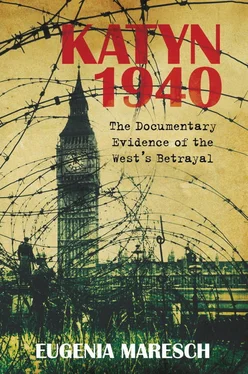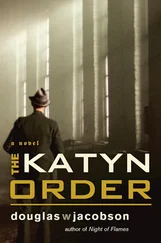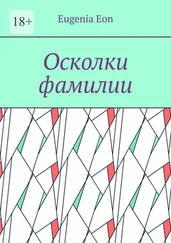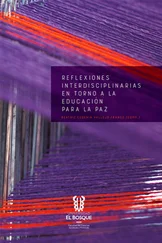If the facts about Katyn are known, why the need for further action? If the facts are not sufficiently established, why should HMG be expected to express a view, and what good would a new enquiry do without the help of the Polish and Soviet Governments?
There is in fact an inherent weakness in the position of Lord St. Oswald and Mr Airey Neave, to which the Secretary of State might wish to draw attention. In pressing for a new effort to ‘secure pronouncement establishing beyond contention’ the authorship of the Katyn massacre, they are compelled to argue either (a) that the facts about Katyn are well known, i.e. the Soviet Government is guilty, in which case no further effort to establish the authorship of the crime would appear to be necessary; or (b) that some new enquiry is first necessary to establish the facts to universal satisfaction; in which case it must be asked why HMG should now be expected to express a public view if the evidence is still incomplete, and whether any new enquiry would be likely to succeed without the cooperation of the Polish and Soviet Governments, which is not to be expected in the circumstances. Lord St. Oswald’s case therefore comes down to a request for public condemnation of the Soviet Government by Britain (and others) without further ado, which is not a course of action likely to advance HMG’s interests in any way whatever. But we see no advantage in breaking the silence that we have preserved for nearly 30 years on the Katyn massacre.
HMG does not shrink from criticising Soviet actions where British interests require it e.g. the Soviet threat in the Indian Ocean.
Defensive point 12
HMG will not take an initiative to raise Katyn at the UN, because as Lord Salisbury said in the House of Lords this would be useless without Soviet cooperation.
Sir Alec must have convinced the two politicians, as the parliamentary debate was not picked up again. Lord Aberdare dropped the case with a final statement:
My Lords, as I told the House on 29 June, I meant that we are speaking of the murder and disappearance of Polish officers on Soviet territory.
Undaunted by failure in both Houses of Parliament, Airey Neave wrote on 28 February 1972 to the Secretary of State Sir Alec Douglas-Home, asking whether there would be any objection to the erection of a monument to the dead of Katyn in one of the Royal Parks in London. The idea, conceived some time before, was chiefly to help the families who wanted to have a place to grieve for their husbands and fathers murdered ‘on Soviet territory’. A Memorial Fund was launched and a Committee was formed under the chairmanship of Lord Barnby, Airey Neave and Lord St Oswald deputising; the task of Honorary Secretary was given to Louis FitzGibbon and Honorary Treasurer to Helen Marcinek, English wife of a Polish officer. The patrons of the Memorial included a number of prominent Polish émigré and British personalities. [11] Members of the Anglo-Polish Memorial Committee: the Marquis of Salisbury, the Earl of Arran, Viscount Monkton, Lord Barnby, Lord St Oswald, MPs Sir George St Clair, Sir Tufton Beamish, Winston Churchill (grandson of Sir Winston), Airey Neave and Peter Archer; among the Poles: President A. Zaleski, Ambassador E. Raczyński, Generals S. Kopański, L. Ząbkowski, K. Ziemski and Dr Z. Stahl; from the USA A. Mazewski, S. Korboński, S. Kolańczyk.
On 28 May, an article was to appear in the Sunday Times by Lord Bethell and EE&SD was busy telephoning war-time diplomats (Lord Avon – Anthony Eden – Sir Frank Roberts, Sir Dennis Allen and Sir Owen O’ Malley), to warn them of the official policy on Katyn and that they must stick to the official line if the press were to quiz them. At 87 years of age Sir Owen was probably not too concerned about the FCO’s admonitons but he towed the line anyway. In his article, Bethel refers to these gentlemen who were no longer in government, and asks them to do the decent thing and admit the truth of what they personally, secretly believed.
Urged by Julian Bullard, Douglas-Home, the Secretary of State, agreed to see Neave and Lord Barnby on 6 June, with a view to persuading them to drop the project, as Warsaw and Moscow interpreted it as a ‘calculated political act’. Douglas-Home argued that it would not help the dead or the living and would be regarded only as ‘a salve to one’s conscience’. But there was a hidden agenda regarding relations with Russia and Poland, which at that time were fragile and the bilateral talks in the pipe line might have been affected. Douglas-Home advised Neave to look for a private place – a Polish church or a cemetery would be eminently suitable. During further discussions, Neave retracted his original pledge that there would be no inscriptions on the monument or any statement attributing responsibility to the Russians. It was a difficult pledge to honour, as an appeal for funds was already printed and distributed with the forbidden text. By that time a sum of £ 8,000 had been collected, a good part of it from Members of Parliament. Encouraged by this response, Count Stefan Zamoyski had the courage and audacity to invite the Secretary of State to contribute; he did not. [12] TNA FCO 28/ 1945 ENP 10/1, confidential briefs from EE&SD to Private Secretary from 24 May to July 1972.
The first location chosen was Thurloe Place, on Cromwell Road, jointly controlled by the Victoria and Albert Museum and the Department of Education (DOE). Permission was refused. Ironically, some years later at that particular spot a monument was erected and dedicated to the victims of another wretched act of Soviet violence, the pro-German Cossacks who were deported by force from occupied postwar Germany back to Russia by the disingenuous British government, where Stalin’s reprisal awaited them.
Another position was sought, this time in St Luke’s disused churchyard gardens in Chelsea. The local council was willing to give permission, but discreet pressure by Whitehall on Church authorities together with organised opposition from the residents, who feared public demonstrations on their doorstep, put an end to the project. The Committee fought but lost on appeal to the Diocesan Consistory Court.
With the change in government, Lord Barnby wrote to the Labour Party Minister Goronwy Roberts for his understanding and support. Roy Hattersley, the Minister’s Parliamentary Private Secretary, answered on his behalf in a predictable manner. [13] TNA FCO 28/ 2533 ENP 10/3, letter dated 3 April 1974.
It would be wrong for me to give you the impression that the present administration would be any readier than their predecessors either to be associated with the plan to erect a memorial in this country or to promote a new enquiry into the circumstances of the massacre. HMG have absolutely no standing in this matter and that the only result of a new enquiry would be to open old wounds.
Julian Bullard’s brief [14] TNA FCO 28/ 1945 ENP 10/1 Part A, brief by Julian L. Bullard head of the EE&SD, 11 July 1972.
for Douglas-Home included some of his personal views, which were bordering on the cynical. He could not see the reason why HMG should authorise a monument to the victims of Katyn, rather than to those of any other atrocity that occurred in a foreign country during the war. He advised the government to stop this ‘gratuitous irritant’ and tell the sponsors that they could erect a monument inside one of the Polish churches or cemeteries, or play for time and steer the Poles to a less conspicuous site. Either way, the FCO had to approve any inscription.
Airey Neave had another meeting, this time with Anthony Royle, the Permanent Under Secretary of State, on the subject of the inscription, repeating almost the same arguments as Bullard. Neave this time stood his ground. Having visible support from an all-party committee, amongst them Peter Archer, Lord Barnby, Sir George Sinclair, Winston Churchill, Sir Tufton Beamish and William Hamling, he would not bow to Royle’s wishes and asked him to face the committee himself. He rejected the notion that Anglo-Polish relations were at stake; the heart of the matter was ‘the recognition of a serious injustice’. He asked the Under Secretary how long HMG ‘should submit to covering up Soviet responsibility’. [15] TNA FCO 28/ 1947 ENP 10/1, minutes of the meeting held by A. Royle, PUS and A. Neave MP on 17 October 1972.
Читать дальше












